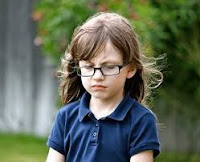The Female Version of High-Functioning Autism
“What are some of the traits of high functioning autism that are unique to girls with the disorder?”
High-Functioning Autism (HFA) affect behavior, personality, and the way the child interacts with others. The symptoms of HFA in females are usually displayed in a more subtle manner, which often results in missed or incorrect professional diagnoses, a lack of access to special education services and provisions in school, and a greater chance of social and emotional problems in adulthood.
Several distinct differences exist in regard to the ways that females with HFA behave as compared to their male counterparts, for example:
High-Functioning Autism (HFA) affect behavior, personality, and the way the child interacts with others. The symptoms of HFA in females are usually displayed in a more subtle manner, which often results in missed or incorrect professional diagnoses, a lack of access to special education services and provisions in school, and a greater chance of social and emotional problems in adulthood.
Several distinct differences exist in regard to the ways that females with HFA behave as compared to their male counterparts, for example:
- “non-autistic” females will play with dolls by pretending that they are interacting socially, but HFA females may collect dolls and not use them to engage socially with their peers
- a girl with HFA is more likely to have interests that are common to “typical” females, whereas an HFA male is more likely to have an unusual interest (e.g., a girl may be obsessed with horses, while a boy may be obsessed with AAA batteries)
- acceptance from peers can sometimes mask the issues that these girls have so that they are not recognized by educators and parents, and as a result, they are less likely to suggest psychological and social evaluations for them
- they are highly intelligent, but like their autistic counterparts, possess poor language skills
- they are not often aggressive when they get frustrated; instead, they tend to be withdrawn and can easily "fly under the radar" in classrooms and other social environments
- fascination with certain subjects can lead to them lagging behind their peers in terms of maturity and age-appropriate behavior (e.g., a 13-year-old girl with HFA may be fascinated with stuffed animals or cartoons long after other peers her age have outgrown these things
- females with HFA may be more likely to internalize their emotions and experience inward or passive signs of aggression, whereas males often express their feelings and frustrations through emotional outbursts (these gender-related behaviors may be part of the reason that fewer females are diagnosed)
- females with the disorder often display obsessive tendencies in regard to animals, dolls, and other female-oriented interests
- girls on the autism spectrum are often less talkative than other females their age
- they are often protected and nurtured by their “non-autistic” friends who help them cope with difficult social situations
- girls with the disorder may be mistakenly assumed to have a personality disorder because they mimic typical kids, but use phrases inappropriately
- they are intrigued with fantasies that include magical kingdoms, princesses, and other fairy tale elements
- their behaviors are more passive than those typical of males with HFA
- girls on the spectrum often attempt to mimic the interests, behavior, and body language of others in an attempt to "fit in" – in fact, they become quite adept at this mimicking, causing them to elude diagnosis and treatment throughout life in many cases
- they are more able to express their emotions in a calmer way than their male counterparts
- they tend to be bored with others their age and have difficulty empathizing with peers

As females on the spectrum become adults, they may feel isolated because they react differently to certain "stressful" situations. Their comments can seem insensitive and uncaring, when in reality, they simply may not fully understand the concept of empathy. These young ladies often look for companionship with other adult females who have similar behavior patterns and outlook.
More resources for parents of children and teens on the autism spectrum:
==> How to Prevent Meltdowns and Tantrums in Children with Autism Spectrum Disorder
==> Parenting System that Reduces Defiant Behavior in Teens with Autism Spectrum Disorder
==> Launching Adult Children with Autism Spectrum Disorder: Guide for Parents Who Want to Promote Self-Reliance
==> Teaching Social-Skills and Emotion-Management to Children with Autism Spectrum Disorder
==> Parenting Children and Teens with High-Functioning Autism: Parents' Comprehensive Handbook
==> Unraveling the Mystery Behind High-Functioning Autism: Audio Book
==> Parenting System that Reduces Defiant Behavior in Teens with Autism Spectrum Disorder
==> Launching Adult Children with Autism Spectrum Disorder: Guide for Parents Who Want to Promote Self-Reliance
==> Teaching Social-Skills and Emotion-Management to Children with Autism Spectrum Disorder
==> Parenting Children and Teens with High-Functioning Autism: Parents' Comprehensive Handbook
==> Unraveling the Mystery Behind High-Functioning Autism: Audio Book


